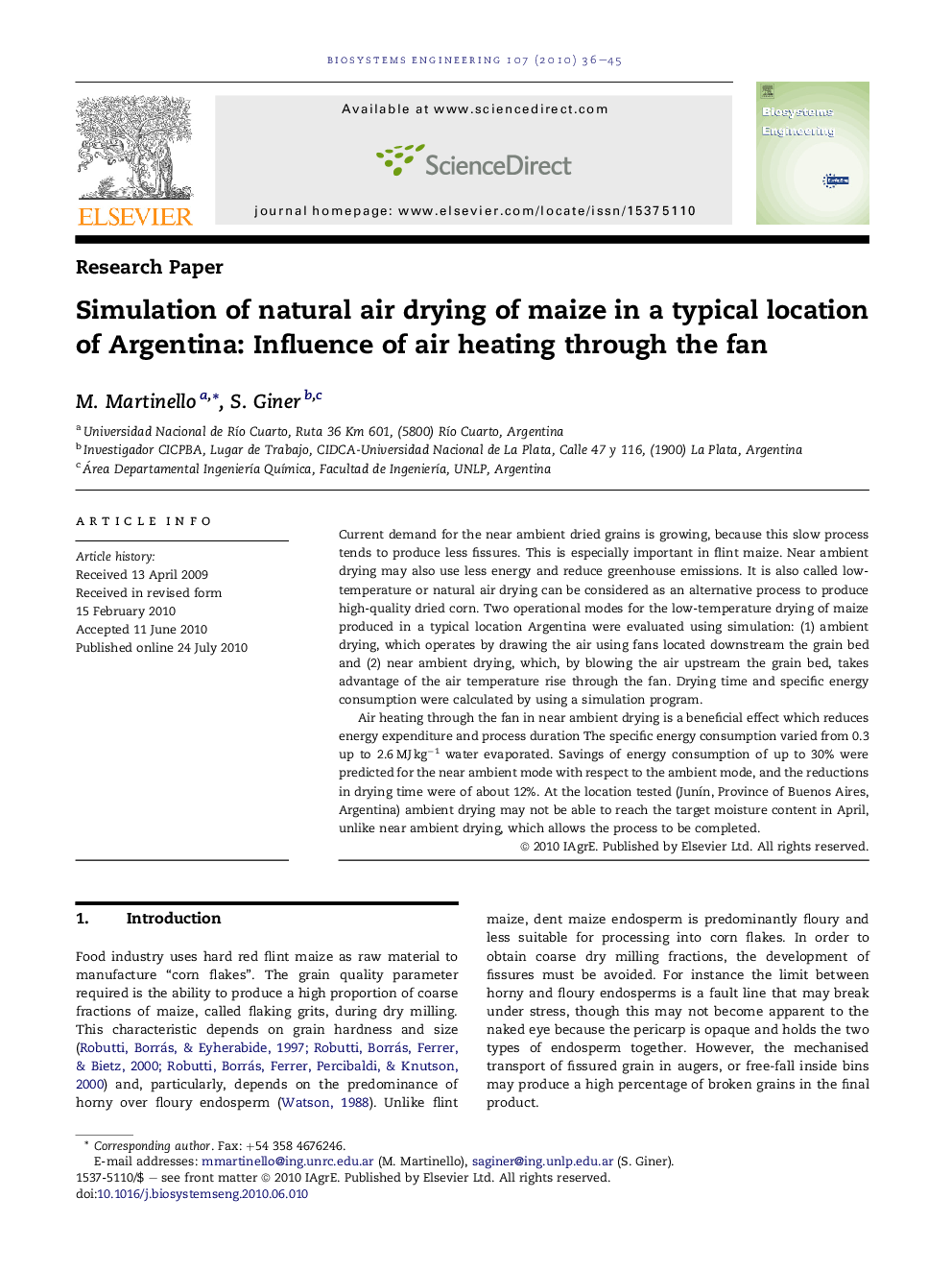| Article ID | Journal | Published Year | Pages | File Type |
|---|---|---|---|---|
| 1711743 | Biosystems Engineering | 2010 | 10 Pages |
Current demand for the near ambient dried grains is growing, because this slow process tends to produce less fissures. This is especially important in flint maize. Near ambient drying may also use less energy and reduce greenhouse emissions. It is also called low-temperature or natural air drying can be considered as an alternative process to produce high-quality dried corn. Two operational modes for the low-temperature drying of maize produced in a typical location Argentina were evaluated using simulation: (1) ambient drying, which operates by drawing the air using fans located downstream the grain bed and (2) near ambient drying, which, by blowing the air upstream the grain bed, takes advantage of the air temperature rise through the fan. Drying time and specific energy consumption were calculated by using a simulation program.Air heating through the fan in near ambient drying is a beneficial effect which reduces energy expenditure and process duration The specific energy consumption varied from 0.3 up to 2.6 MJ kg−1 water evaporated. Savings of energy consumption of up to 30% were predicted for the near ambient mode with respect to the ambient mode, and the reductions in drying time were of about 12%. At the location tested (Junín, Province of Buenos Aires, Argentina) ambient drying may not be able to reach the target moisture content in April, unlike near ambient drying, which allows the process to be completed.
